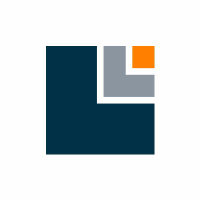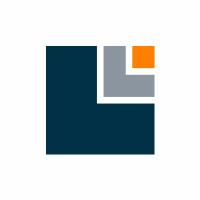
Aker Solutions ASA
OSE:AKSO


| US |

|
Johnson & Johnson
NYSE:JNJ
|
Pharmaceuticals
|
| US |

|
Berkshire Hathaway Inc
NYSE:BRK.A
|
Financial Services
|
| US |

|
Bank of America Corp
NYSE:BAC
|
Banking
|
| US |

|
Mastercard Inc
NYSE:MA
|
Technology
|
| US |

|
UnitedHealth Group Inc
NYSE:UNH
|
Health Care
|
| US |

|
Exxon Mobil Corp
NYSE:XOM
|
Energy
|
| US |

|
Pfizer Inc
NYSE:PFE
|
Pharmaceuticals
|
| US |

|
Palantir Technologies Inc
NYSE:PLTR
|
Technology
|
| US |

|
Nike Inc
NYSE:NKE
|
Textiles, Apparel & Luxury Goods
|
| US |

|
Visa Inc
NYSE:V
|
Technology
|
| CN |

|
Alibaba Group Holding Ltd
NYSE:BABA
|
Retail
|
| US |

|
3M Co
NYSE:MMM
|
Industrial Conglomerates
|
| US |

|
JPMorgan Chase & Co
NYSE:JPM
|
Banking
|
| US |

|
Coca-Cola Co
NYSE:KO
|
Beverages
|
| US |

|
Walmart Inc
NYSE:WMT
|
Retail
|
| US |

|
Verizon Communications Inc
NYSE:VZ
|
Telecommunication
|
Utilize notes to systematically review your investment decisions. By reflecting on past outcomes, you can discern effective strategies and identify those that underperformed. This continuous feedback loop enables you to adapt and refine your approach, optimizing for future success.
Each note serves as a learning point, offering insights into your decision-making processes. Over time, you'll accumulate a personalized database of knowledge, enhancing your ability to make informed decisions quickly and effectively.
With a comprehensive record of your investment history at your fingertips, you can compare current opportunities against past experiences. This not only bolsters your confidence but also ensures that each decision is grounded in a well-documented rationale.
Do you really want to delete this note?
This action cannot be undone.

| 52 Week Range |
19.2928
34.98
|
| Price Target |
|
We'll email you a reminder when the closing price reaches NOK.
Choose the stock you wish to monitor with a price alert.

|
Johnson & Johnson
NYSE:JNJ
|
US |

|
Berkshire Hathaway Inc
NYSE:BRK.A
|
US |

|
Bank of America Corp
NYSE:BAC
|
US |

|
Mastercard Inc
NYSE:MA
|
US |

|
UnitedHealth Group Inc
NYSE:UNH
|
US |

|
Exxon Mobil Corp
NYSE:XOM
|
US |

|
Pfizer Inc
NYSE:PFE
|
US |

|
Palantir Technologies Inc
NYSE:PLTR
|
US |

|
Nike Inc
NYSE:NKE
|
US |

|
Visa Inc
NYSE:V
|
US |

|
Alibaba Group Holding Ltd
NYSE:BABA
|
CN |

|
3M Co
NYSE:MMM
|
US |

|
JPMorgan Chase & Co
NYSE:JPM
|
US |

|
Coca-Cola Co
NYSE:KO
|
US |

|
Walmart Inc
NYSE:WMT
|
US |

|
Verizon Communications Inc
NYSE:VZ
|
US |
This alert will be permanently deleted.
 Aker Solutions ASA
Aker Solutions ASA
Aker Solutions ASA
Investor Relations
Aker Solutions ASA stands as a testament to the intricate and dynamic world of energy services, rooted deeply in the oil and gas industry. Established with the mission to provide cutting-edge solutions for the global energy sector, the company has evolved into a formidable player, adept at navigating the complexities of offshore and onshore projects. Aker Solutions combines engineering, procurement, and construction (EPC) services, delivering comprehensive packages that drive efficiency and innovation across the project's lifecycle. This holistic approach not only streamlines operations but also fosters a synergy between traditional energy production and emerging technologies. At its core, Aker Solutions thrives on its ability to tailor solutions that address the multifaceted challenges of energy extraction and production, emphasizing sustainability and the secure delivery of resources.
The economic engine that powers Aker Solutions is its broad portfolio of services and products tailored to the specific needs of its clients. From subsea production systems, which facilitate the extraction of oil and gas from ocean floors, to maintenance and modification services that extend the lifespan of existing energy infrastructures, Aker Solutions taps into various revenue streams. Each project, whether the build-out of a new offshore platform or the retrofitting of an existing plant, represents a partnership cemented by long-term contracts and the promise of operational excellence. Furthermore, as the energy sector increasingly leans toward greener alternatives, Aker Solutions leverages its expertise in carbon capture and renewable energy technologies, gradually shaping its focus to meet the demands of a transitioning energy market. Through this blend of innovation and tradition, Aker Solutions continues to position itself as a leading force in an ever-evolving industry.

Aker Solutions ASA stands as a testament to the intricate and dynamic world of energy services, rooted deeply in the oil and gas industry. Established with the mission to provide cutting-edge solutions for the global energy sector, the company has evolved into a formidable player, adept at navigating the complexities of offshore and onshore projects. Aker Solutions combines engineering, procurement, and construction (EPC) services, delivering comprehensive packages that drive efficiency and innovation across the project's lifecycle. This holistic approach not only streamlines operations but also fosters a synergy between traditional energy production and emerging technologies. At its core, Aker Solutions thrives on its ability to tailor solutions that address the multifaceted challenges of energy extraction and production, emphasizing sustainability and the secure delivery of resources.
The economic engine that powers Aker Solutions is its broad portfolio of services and products tailored to the specific needs of its clients. From subsea production systems, which facilitate the extraction of oil and gas from ocean floors, to maintenance and modification services that extend the lifespan of existing energy infrastructures, Aker Solutions taps into various revenue streams. Each project, whether the build-out of a new offshore platform or the retrofitting of an existing plant, represents a partnership cemented by long-term contracts and the promise of operational excellence. Furthermore, as the energy sector increasingly leans toward greener alternatives, Aker Solutions leverages its expertise in carbon capture and renewable energy technologies, gradually shaping its focus to meet the demands of a transitioning energy market. Through this blend of innovation and tradition, Aker Solutions continues to position itself as a leading force in an ever-evolving industry.





























 You don't have any saved screeners yet
You don't have any saved screeners yet
